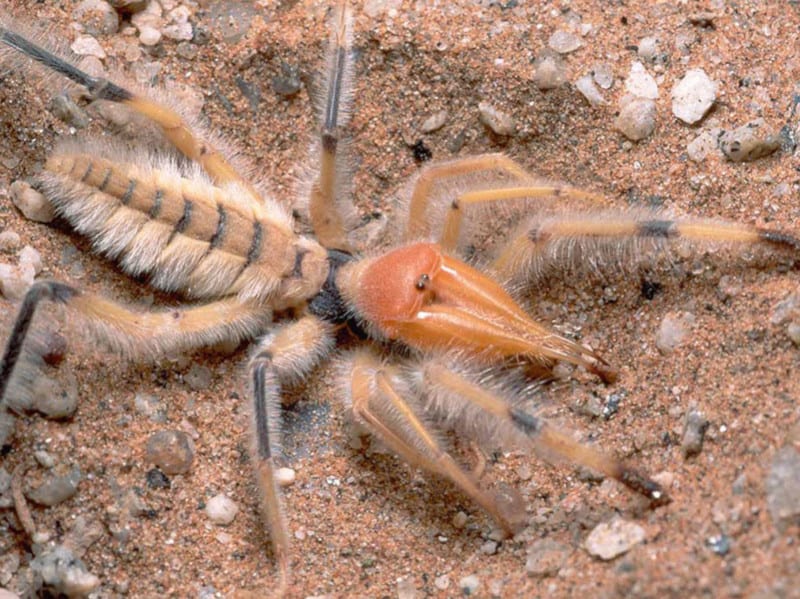
Public Domain Image
Giant Camel Spider Facts
- Most notably, the Giant Camel Spider does indeed represent a larger than average species of arachnid. However, it most certainly does not attain the gargantuan sizes often claimed by some.
- Further, individuals are naturally, given its environment, drawn to any source of shade. Therefore, if a person or animal, such as a camel stands still, it will attempt to remain in the shadow.
- However, despite its fearsome reputation, it poses no threat to larger creatures. It merely seeks them as sources of shade and will actually move along with the human or animal to remain in that shade.
- Finally, this particular arachnid has the ability to move at relatively rapid speeds across the sand. In fact, this amazingly adapted spider often runs across the blistering sands at speeds exceeding 10 mph (16 kph).
Related Articles
Black Widow Trogloraptor Lichen Spider

Photographer: Siamaksabet
CC License: https://bit.ly/2Up9H1m
Giant Camel Spider Physical Description
Firstly, most measurements of the Giant Camel Spider refer primarily to the body length. The body length usually measures about 3 in (7 cm). But, in fact, many individuals measure closer to 2 in (5 cm) in body length. The long legs add the remainder.
Furthermore, the most distinctive features of this spider remain the large mandibles. In many individuals, those grow longer than the body. Each of these also forms a powerful pincer, much like that of a crab.
In addition, color varies only slightly among the different specimens within the species. The color patterns most commonly consist of shades of brown or dark orange.
Finally, members of this remarkable species do display a moderate degree of sexual dimorphism. In its case, this occurs because the males typically grow smaller than the female. But, the legs are longer in relation to the body.
- Kingdom: Animalia
- Phylum: Arthropoda
- Class: Arachnida
- Order: Solifugae
- Family: Galeodidae
- Genus: Galeodes
- Species: G. arabs

Public Domain Image
Giant Camel Spider Distribution, Habitat, and Ecology
First of all, the astounding Giant Camel Spider remains primarily primarily endemic to desert regions of northern Africa and western Asia. But even there, it only thrives in the various desert regions of the region.
This amazing creature also has an entirely carnivorous diet. In addition, its powerful pincers can shear hair and skin from larger prey, and break small bones. Further, though prey can include small rodents and lizards, it usually feeds on insects.
Rather understandably, given its environment, it typically has a nocturnal lifestyle. Hunting at night not only avoids the worst of the heat, but also avoids its major predators. Finally, these include bats, toads, and even scorpions.
Species Sharing Its Range
Fennec Fox Crowned Eagle Rose of Jericho
Check out our other articles on 9 of the Weirdest Animals on Earth, Ili Pika, Playa de Gulpiyuri, Blue Death Feigning Beetle, Naked Man Orchid, Hyalinobatrachium dianae















Leave a Reply